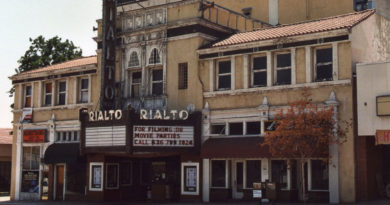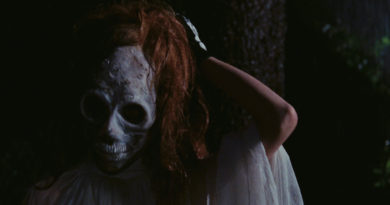The Best Bad Movie
Whenever aficionados of le cinema du stinko get together to discuss legendarily bad movies, titles like Plan 9 from Outer Space, Howard the Duck and Battleship Earth usually pop up. But for my money, the magnum opus of screamingly hilarious, awful filmmaking has got to be the 1967 Twentieth Century-Fox production of Valley of the Dolls.
Scrawled in 1966 by the minor actress and author Jacqueline Susann, this showbiz rags to riches to rags to drugs tale hit a nerve in America and strangely became a huge bestseller. It still ranks up there as one of the biggest-selling novels of all time!
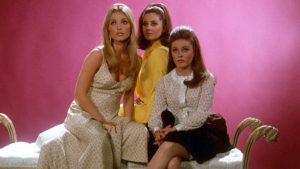
Fox purchased the rights for a mere $65,000 and put it into production with a not-insignificant $5 million budget. It seemed to be perfect timing for such a tawdry subject. After all, Hollywood was growing up with more adult films like Who’s Afraid of Virginia Woolf? and Bonnie and Clyde, both 1966.
But despite its sordid scenario, Valley was determinedly old-fashioned in its approach, even as it delved into such taboo subjects as drug addiction, homosexuality and criminally terrible acting.
Mark Robson, who cut his teeth on legendary producer Val Lewton’s low-budget horror movies in the 1940s, was an odd but (as it turns out) inspired choice as director. Conductor Andre Previn and his then-wife Dory supplied the unforgettably awful musical numbers for the film. Dory had had a mental breakdown a couple of years before and was briefly institutionalized, which may explain why her lyrics make absolutely no sense whatsoever.
And the cast! Academy Award-winner Patty Duke, who started strong with The Miracle Worker and then veered off into twinsville with The Patty Duke Show, somehow got talked into playing Neely O’Hara as a wise career move. Keep in mind, she was barely out of her teens when production started.
Her performance is precocious but wildly over-the-top, and she was mortified the first time she saw the finished product. Later in life, she was able to embrace her participation in the cult classic, and even appeared at screenings.
Barbara Parkins was a TV star, doing Emmy-nominated work in Peyton Place (whose film adaptation Robson had directed. Coincidence?) when she was cast as the level-headed Anne Welles. The tragic Sharon Tate came onboard as the seemingly bubble-brained but grounded showgirl Jennifer North, who knew that her sell-by date was coming quickly.
And the last important female role was filled by another Oscar winner, the scenery-chewing Susan Hayward, who became a role model for drag queens everywhere with her performance as Helen Lawson, the bigger-than-life Broadway star whose enormous celebrity is baffling, to say the least, since she has a penchant for mercilessly slaughtering her underlings and singing banal tunes in somebody else’s voice.
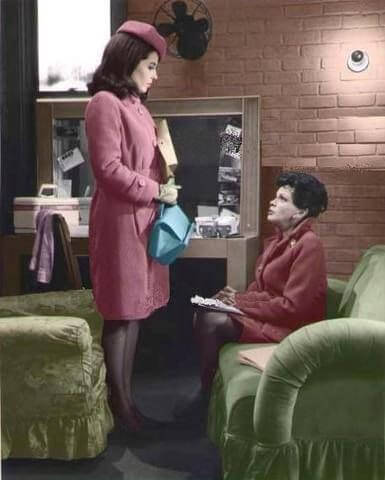
Judy Garland had originally been cast as Lawson, but it’s said she was fired when she showed up to work on the first day plastered. Photos and screen tests reveal that she looked pretty bad for 45 years old, and it’s doubtful that this role would have done anything for a life that was already spinning down the tubes.
But back to the fun. As the film opens, we see ’60s stop-motion animation, which looks like Rudolph the Red-Nosed Reindeer on acid, while Anne’s voice admonishes us that “you have to climb Mount Everest to reach the valley of the dolls.”
Then we meet the virginal little minx herself in the quaint New England town of Lawrenceville. She dumps her drip of a boyfriend and announces that she intends to live in New York, much to the horror of her spinster aunt and spinster mother.
I know, you can’t have a spinster mother, but everyone seems to be that way in Lawrenceville. Hell, Anne’s still young and attractive, but she’s already a spinster.
Next thing you know, Anne is checking in at a Manhattan hotel for young spinster women and applying for a secretarial job at a talent agency, Bellamy and Bellows, whose youngest agent, Lyon Burke (Paul Burke) sends all the female hearts aflutter. Her first assignment is to go to the Broadway theater where Helen is rehearsing her new show, Hit the Sky, to get her to sign some contracts.
Overhearing Neely singing “Give a Little More” in a nearby rehearsal hall, Anne comments in her pretentious English accent, “She’s quite good, isn’t she?” Helen responds by listening for a moment, tilting her head, nibbling on her glasses, nodding and saying, “Yeah, she is. And she’s out! I want you to tell Bellamy to tie a can to that little broad’s tail!”
Because, she explains, “The only star of a Helen Lawson show is Helen Lawson, and that’s me, baby!” as she thumps her chest. Hayward really should have won a special Oscar for Best Performance as a Drag Queen by an Actual Woman.
And what the hell is her show about? It’s got a tune called “Give a Little More,” showgirls in enormous headdresses, and Helen standing on a stage orbited by huge translucent mobiles while singing “I’ll Plant My Own Tree” and bending over sideways in a really bizarre and painful-looking position. And the singing! Her vocal double, Margaret Whiting, had a light, pleasant voice which sounded nothing at all like Hayward, whose actual, guttural growl voice made Bea Arthur seem delicate.
After Anne sees how how talented Neely is and how unassuming Jennifer is, they all become BFFs for no apparent reason. It’s film editing, Jake. Time marches on…
ANNE
Anne is unable to resist the advances of a new client, a makeup manufacturer who thinks she’d be their perfect “Gillian Girl.” Cue one of the film’s hilarious still-frame montages during which she gets into increasingly ridiculous outfits (courtesy of Travilla — one of those single-monikered designers) and extreme makeup (including white lipstick).
NEELY
After she’s booted from “Hit the Sky,” Lyon books Neely on a TV charity marathon where she performs “It’s Impossible” and immediately becomes a huge star. This scene makes me crazy. First of all, it’s got Joey Bishop. Secondly, the lyrics are completely nonsensical:
 It’s impossible
It’s impossible
It’s not my style
If I tried it I’d miss by a mile…
Hey, lucky for me
Far as I look, far as I see (I’m no winner)…
And so on.
She never gets around to saying what’s impossible. Or what it is she’s trying to do. And it’s not a good idea to wear a long necklace when you’re making moves like Joe Cocker having a seizure. The damn thing keeps looping around one breast at a time until the exciting finale when she manages to encircle them both simultaneously. It’s a riot.
Not to be outdone by Anne, Neely also gets a montage sequence that chronicles her increasing dependence on pills. Soon she becomes as big a hardass as Helen and starts snarling all of her dialogue. I love it when Anne admonishes her (she does a lot of admonishing) not to drink with the pills, and she retorts, “Why not? They work faster.” Lots of people snarl their dialogue in this movie, except Parkins, who talks like a phone sex operator with a pretentious English accent.
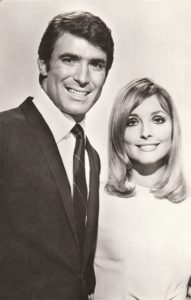
JENNIFER
Meanwhile, Jennifer falls for nightclub entertainer Tony Polar (the reptilian Tony Scotti) whose sister, Miriam, is played by Lee Grant, who manages to overact without even moving or talking. I think it’s her hair. Or is it Anna Wintour‘s hair?
Tony’s act consists of one song, “Come Live with Me,” which he sings in an amusingly girlish voice, but still sends Jennifer swooning. Check out these lyrics:
Love is a flower that blooms for an hour
And withers and dies, what is the prize?
Forgive me if I deride love, but honey, I’ve tried love
And so I say….come live with me….
Certainly those lyrics read as if they were written by someone who was recently institutionalized. But Miriam is harboring a secret — Tony has Huntington’s disease and will become a vegetable in a few years, so she keeps him on a short leash and a strict budget so he can go to a “nice place” when the time comes.
Neely ditches her nice-guy boyfriend, Mel (the incredibly bland Martin Milner) and takes up with designer Ted Casablanca (Alex Davion), who everyone thinks is gay. When Jennifer says, “You know how bitchy fags can be,” Neely explodes. “Ted Casablanca is not a fag! And I’m the dame who can prove it.”
But then she catches him enjoying a midnight swim with another woman, and he accuses her of emasculating him (“You made me feel that I really was queer.” Ouch.) He insists that the woman he’d just been frolicking with made him “feel nine feet tall.”
Her perplexing response? “I could take that better.” What the hell does that mean?
She rushes off to San Francisco and gets completely wasted, waking up in a hotel room with a burly sailor type who is busy robbing her. Finally, she gets sent to a sanitarium where extremely butch nurses give her a bizarre form of hydrotherapy, which consists of jamming her in a bathtub and strapping her under a canvas sheet that only her head can stick out of. Ironically, in this scene, she looks like Linda Blair in The Exorcist.
During a patient Happy Hour, she sings “Come Live with Me” and is surprised to hear a familiar voice joining in. Yep, it’s old veggie Tony Polar, remembering his only song. He wheels out and they perform it as a duet until he passes out as a result of banal lyrics.
This episode has oddly given Neely the determination to get back in the game. She sobers up, becomes tougher than ever, and sets her cap for Lyon. This causes Anne to fall apart. Next thing you know, she’s got her own prescription of “dolls” and is staggering down a California beach in a drug-induced haze.
Oh, and Jennifer, who’s been reduced to making soft-core porn to keep Tony hospitalized (“Boobies, boobies, boobies,” says Neely), is diagnosed with breast cancer and decides to snuff it rather than undergo a double mastectomy.
This is actually the most authentic scene in the film (probably because it’s Sharon Tate, whose real fate was even more ghastly). Taking an overdose of pills, she lays down and waits for the end, accompanied by the sound of Tony’s girly voice singing — what else? “Come Live with Me.” Author Susann herself shows up as a reporter in the scene afterwards when they’re hauling Jennifer’s body to the hearse.
Then there’s the moment we’ve all been waiting for — the reunion of Neely and Helen in the ladies’ room at an event for Helen that Neely crashes to be the center of attention. This scene has the greatest dialogue:
Helen: They drummed ya right out of Hollywood, so ya come crawlin’ back to Broadway. Well, Broadway doesn’t go for booze and dope.
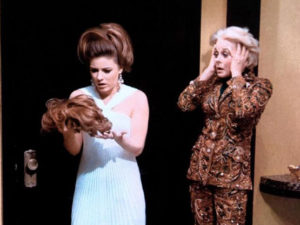
Yes, she pronounces Broadway with an emphasis on the second syllable. Anyhow, she snarls, “Outta my way. I gotta man waiting for me,” to which Neely retorts, “That’s a switch from the fags you’re usually stuck with.” Helen’s response: “At least I never had to marry one.” Neely snatches the wig from her head and tries to flush it down the toilet.
The good times don’t last, though. Neely has a relapse. On opening night, she comes staggering out of her dressing room in a bee costume which is meant for the second act. “So?” she reasons. “We’ll do the second act first!”
Her understudy, grinning rapaciously and really looking like a drag queen, slithers by to take the stage. She’s wearing a sailor outfit, so obviously she’s ready for the first act. What the hell are these shows about?
Neely ends up in a dark alley, drunk and disorderly, shrieking out the names of all those she’s wronged, with the appropriate death knell gongs on the soundtrack. I guess she can’t call out the names of everyone in the audience, because that’d take too damn long.
Epilogue: Anne goes back to Lawrenceville to live in the Welles homestead and presumably take up the family business of spinsterhood.
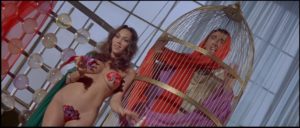
Now, I know this film is supposed to span a couple of decades, but there’s nothing here to indicate the passage of time. Nobody ages, the clothes remain the same, and the lousy songs are, for lack of a better word, immortal.
But that’s part of the fun. Neely, Anne and Jennifer are stuck in an endless loop of incomprehensibility for generations to enjoy for centuries to come.
This is my happening and it freaks me out!
Three years later, Fox bankrolled a sequel-in-name-only, Russ Meyer’s X-rated Beyond the Valley of the Dolls, which was scripted by the late great critic Roger Ebert. In this one, the Carrie Nations, a girl group, goes to Hollywood seeking fame and fortune and get caught up in the drug and sex lifestyle.
Intentionally camp, it features Meyers’ trademark rapid-fire editing and boobies, boobies, boobies. And John LaZar saying, “This is my happening and it freaks me out!” I love it.


